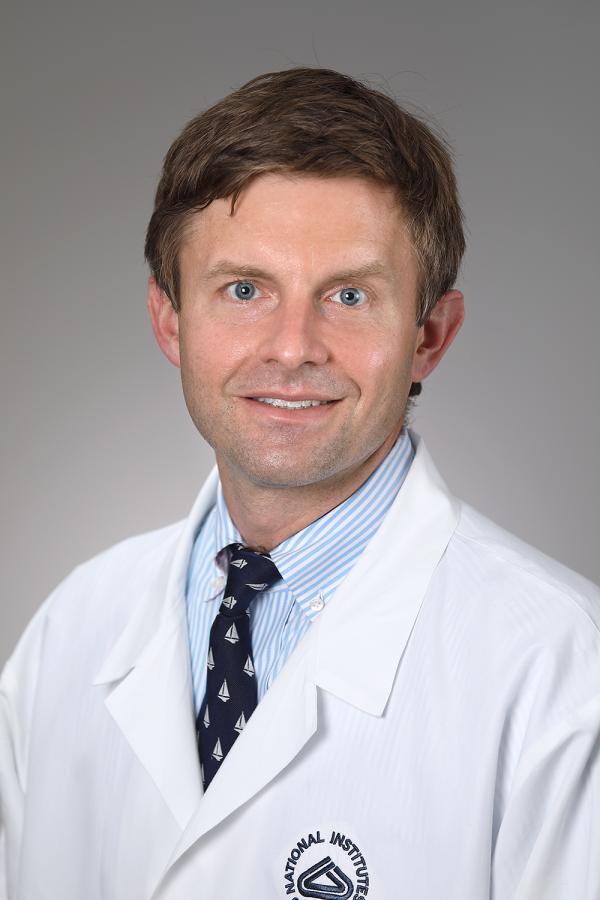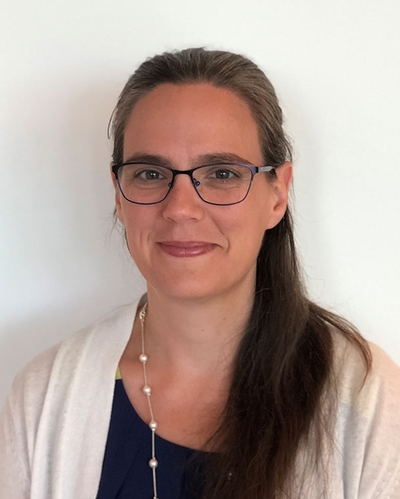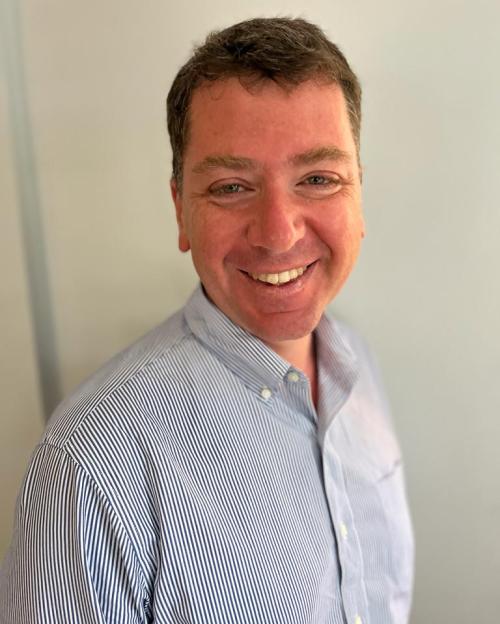Welcoming NIH’s Four Newest Lasker Scholars
IRP Program Boosts Careers of Promising Physician-Scientists
Many scientists have a seemingly single-minded focus on their research, but there are considerable benefits to having one foot in the lab and the other in the clinic. Working with patients gives researchers a daily reminder of the people they are working so hard to help and allows them to investigate the effects of promising but still experimental treatments in willing volunteers. That’s one of the main reasons why the IRP’s Lasker Clinical Research Scholars Program is designed to accelerate the careers of promising early-career physician-scientists.
This year, four NIH researchers began receiving support from the Lasker program, allowing them to dramatically expand their cutting-edge research. From investigating the roots of muscle-weakening genetic conditions to probing the mysteries of rare, hormone-producing tumors, these individuals will use the leg up provided by the Lasker Program to make new discoveries that could one day improve their patients’ lives. Read on to learn more about the exciting research the latest crop of Lasker Scholars is pursuing.
Chris Grunseich: Making Sense of Neuromuscular Disorders

As the calendar turned from 2023 to 2024, Chris Grunseich, M.D., was also turning a page to a new chapter in his career: opening up his very own lab for the first time. After spending six years at NIH as a clinical fellow and another six as a staff clinician, Dr. Grunseich was rearing to get started leading new efforts to get to the roots of so-called ‘neuromuscular’ disorders — a wide range of conditions that damage the motor and sensory nerves that connect the brain and spinal cord to our muscles, leading to muscle weakness.
“When I was selected as a Lasker Scholar, I realized that I am extremely grateful for the opportunity to be a part of a research community studying neuromuscular disease,” he recalls. “It is an exciting time to work in a field with the potential for new discoveries that can be translated back to help patients.”
In his lab, those discoveries will come primarily from new cellular models of various rare, inherited neuromuscular diseases developed using tissue from patients with those conditions. Using those models, Dr. Grunseich’s team can not only probe the molecular aberrations that underly those diseases, but also test new potential treatments to see if they can correct those problems. That approach can lead to new insights more quickly and help improve clinical trials, since gauging the molecular changes that potential treatments cause inside cells can tell researchers what changes to look for in patients participating in clinical trials.
“Some of the diseases we study progress slowly, and having a sensitive way to determine if a drug is working could be very important for the design and cost of clinical studies,” Dr. Grunseich explains.
Of course, as a physician, Dr. Grunseich also spends considerable time with patients, and his work with them has yielded some of the most intriguing insights of his career. For instance, while conducting a clinical study examining how exercise affects patients with a certain genetic neuromuscular disease, he observed that many of them had abnormally elevated levels of a particular enzyme produced by the liver.
“This enzyme elevation had been previously attributed to abnormal muscle, and I became interested in this and developed a new study to investigate why the liver enzymes were elevated,” he recalls.
That study, a collaboration with several other IRP research groups, ultimately showed that the patients’ liver function was abnormal. Many such clinical discoveries can only happen by working closely with both patients and experienced scientific colleagues with a range of expertise, both of which can be found at NIH in great abundance.
“I enjoy the opportunity to work with peers who share the same mission to do research and develop treatments for our patients,” Dr. Grunseich says. “The NIH is a very collaborative environment and I enjoy the teamwork that comes along with working here.”
Fun fact: Dr. Grunseich has seven siblings, including three brothers who are triplets.
Lisa McReynolds: Exploring the Epidemiology of Bad Blood

Lisa McReynolds, M.D., Ph.D., has been interested in medicine from a young age, tracing her passion to an aunt who suffered from a rare autoimmune disease and a 7th grade teacher who she describes as “particularly influential.” Those experiences growing up set her on a path that has now culminated with her selection as a Lasker Scholar, which allowed her to start her own independent IRP lab in June that uses the tools of epidemiology — the study of populations — to learn about inherited diseases that impair the body’s ability to make new blood cells, a condition called ‘bone marrow failure.’
“Bone marrow failure research is a fascinating and unique combination of studying blood, the immune system, cancer, and genetics,” she says.
One such ailment she has studied is a form of bone marrow failure called Fanconi anemia. People need to have two mutations in a certain gene in order to develop the disease, but about 6 percent of the general population has at least one of the genetic variants that cause it. In addition to slowing the production of new blood cells, the condition also dramatically raises patients’ risk for certain cancers. However, scientists have long wondered whether people who only have one related mutation — so-called ‘carriers’ — also have a heightened risk for cancer. Dr. McReynolds and her IRP colleagues have conducted research suggesting the answer to that question is, thankfully, ‘no’ for most of the mutations related to Fanconi anemia.
“Individuals are often identified as single-mutation carriers during genetic testing for other reasons such as tumor testing,” she says. “It is important to understand how to counsel these patients.”
Dr. McReynolds says she was “extremely honored and excited” to be chosen as a Lasker Scholar, viewing it as “a wonderful opportunity to pursue tenure-track research while having strong mentoring and support.” She looks forward to making even more new discoveries about Fanconi anemia and other inherited forms of bone marrow failure in partnership with her IRP colleagues.
“NIH is a very collaborative place, and there is almost always someone here who is an expert in what you need, and those experts are willing to share their knowledge and time,” she says. “You just have to ask.”
Fun fact: Dr. McReynolds serves on the medical staff of the NIH-sponsored Camp Fantastic, a week-long camp for cancer survivors between the ages of 7 and 17. She also loves trying new foods from around the world, “as long as they don’t contain mustard.”
Samira Sadowski: Navigating the Wide World of Neuroendocrine Tumors

During medical school, Samira Sadowski, M.D., decided early on that she wanted to be “more hands-on,” leading her to choose a career as a surgeon. However, it wasn’t long before research caught her eye as well, especially the mysteries of ‘neuroendocrine’ tumors. These rare tumors stem from cells that have traits of both nerve and hormone-secreting cells, such as certain cells in the lungs, hormone-producing cells in the digestive system, and the cells in the pancreas that release insulin. Due to this diversity, there are many varieties of neuroendocrine tumors, “so we can have these tumors kind of everywhere — it’s a vast field,” Dr. Sadowski says.
“What really got me started in research,” she adds, “was seeing that it’s not as simple as just removing one of these tumors and now the patient is hopefully disease-free. These tumors secrete hormones and that affects a lot of other things in the body, so when to do surgery and when not to really interested me. Also, we only have one or two of these vital organs like the adrenal glands or the pancreas, so you can’t just remove them. The clinical guidelines, to be evidence-based, depend on research.”
Unfortunately, scientists currently know relatively little about neuroendocrine tumors because “we have no good models” for them, Dr. Sadowski says. For that reason, much of her lab’s work focuses on developing cell and animal models that can allow researchers to study neuroendocrine tumors. At the same time, her research group is investigating the regulation of genes that behave abnormally in those tumors. For instance, she has found that neuroendocrine tumors with abnormally low amounts of a particular receptor, called SSRT2, grow and spread faster than tumors with more of that receptor. Now, as a Lasker Scholar, she hopes to develop a clinical trial testing how increasing the amount of SSRT2 in tumor cells affects the way cancer patients respond to therapy.
“I feel here at NIH I can really focus on the research and the patients that I treat,” Dr. Sadowski says. “It’s amazing. I see the patients that have the disease and can do lab work to answer all these questions about finding tumor targets and understanding how they’re regulated. I think that’s pretty unique here: allowing me as a surgeon the time to do that.”
Fun fact: In her spare time, Dr. Sadowski enjoys a variety of outdoor activities, describing herself as “an avid runner and biker.” She has less time to bike than she once did now that she has two young children, but she loves to take them with her on bike rides when she can.
Andrea Lisco: Chasing a Cancer-Causing Virus

When Andrea Lisco, M.D., Ph.D., enrolled in medical school in his home country of Italy, he was “not so much interested in clinical medicine,” he says, but instead “fascinated by the mechanistic aspects of biology.” His desire to understand the deeper mysteries of the human body eventually narrowed to the way viruses infiltrate and wreak havoc within us, which he attributes to his experience working at an HIV clinic in the mid-1990s, a time when an incredible new treatment for the disease, protease inhibitors, burst onto the scene.
“Those were the drugs that changed the course of HIV infection and made it a treatable disease,” he recalls. “I was just a student at the time, but that was what sparked my interest in treating infectious disease.”
As a postdoctoral fellow at NIH in the mid-2000s, Dr. Lisco began investigating the mechanisms by which HIV weakens the immune system and facilitates disease caused by other viruses, including human papillomavirus (HPV). HPV can cause cancer even in people with fully functioning immune systems, but it finds purchase in the bodies of HIV-positive individuals much more easily, which is why they are far more likely to develop cancer and other serious symptoms when HPV infects them.
“That seemed to me to be the new frontier and a very attractive topic: cracking the mechanisms that control HPV infection and cells’ transformation into cancer, and how you can control not only the infectious process, but also prevent the development of cancers,” he says. “That’s something for this disease that’s incredibly important.”
Consequently, aside from a few years of medical residency elsewhere, Dr. Lisco has spent his entire career at NIH working with HPV patients and studying the virus. One of the accomplishments he is most proud of is his success working with a particular patient who was experiencing significant symptoms caused by HPV, including cancer, but who was HIV-negative. Dr. Lisco and his IRP colleagues discovered that the patient had a genetic mutation that was impairing the ability of certain immune cells to combat the virus. After a successful bone marrow transplant, the patient’s body began producing normal immune cells that could fight his HPV infection, including the virus-induced cancer.
“That was proof in one patient of the paradigm that the immune system is necessary to control the infection and the cancers that HPV can cause, and that you can change the course of a particular patient,” Dr. Lisco says. “Of course, now we’d like to expand that to a larger group.”
Describing himself as “born and raised at NIH” because he has been there for so long, Dr. Lisco is excited to continue his IRP career as a Lasker Scholar. He is particularly thankful for the opportunity that the program will provide him to translate his discoveries about HPV into treatments that can save patients’ lives.
“The Lasker Program was a natural transition when I had more and more patients that I wanted to study,” he says. “Each patient has a particular biological and immunological problem. You want to understand the mechanism causing the susceptibility to HPV and the development of cancer in one of them, but then you want to expand it to more of them, and for each mechanism there may be a different therapeutic pathway. It was natural for the translational aspiration I had in my career to apply for the Lasker program. It’s a natural fit.”
Fun fact: For Dr. Lisco, an added perk of working at NIH is being able to live in Washington, D.C., which he says is a place “where a very specific punk scene developed.” As an “avid musician and passionate listener of music,” he enjoys attending concerts at D.C.’s many music venues.
Subscribe to our weekly newsletter to stay up-to-date on the latest breakthroughs in the NIH Intramural Research Program.
Related Blog Posts
This page was last updated on Thursday, November 21, 2024
